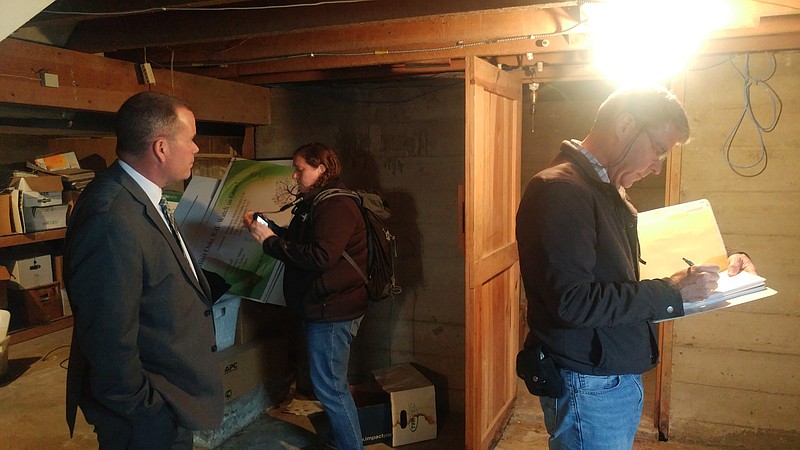The inspection of a school district's buildings for seismic hazards is a quiet, tectonic drift-paced task compared to the massive burst of energy released in the few seconds of an earthquake, but it's an important step toward preparedness.
Blair Oaks R-2 took that step Wednesday.
Missouri school districts can have their buildings assessed as part of a free and voluntary rapid visual screening program for earthquake hazards, and on Wednesday at Blair Oaks, engineers Michael Griffin and Victoria Winn, of Chesterfield-based Creative Construction Solutions, reviewed the district's design construction drawings and various parts of buildings.
"I was educated in California," Griffin said of how he got into the business of seismic engineering - his career dedicated to evaluating existing buildings for seismic safety.
He's overseen seismic evaluations or retrofit designs for infrastructure such as hydroelectric powerplants, hospitals, airports, water pumping stations, water well systems and manufacturing facilities, and he's been to a majority of the school inspections done in Missouri as team leader of the screening program.
Winn also specializes in seismic analysis and has assessed or designed retrofits for infrastructure including hundreds of public water systems in Tennessee, the National Personnel Records Center at Spanish Lake and a wastewater treatment plant in St. Louis.
A good chunk of Griffin's and Winn's day Wednesday was spent looking over available design construction drawings of Blair Oaks' various occupied structures. The drawings are sheets of paper half the size of the conference table they were spread out over at the district's central office, rolled out after they were brought up from the basement, and dating from 1975-2013.
Looking over those documents was approximately two and a half hours' worth of mostly quiet study and making marks and measurements on notes, with contemporary country hits playing in the background from another room.
Griffin said they were looking at types of construction in the drawings. There are 17 in the federal standards they go by, and each type of construction has an associated risk or damage number that's used in calculating whether a building with that design is life-safe, or in other words, whether the building has an acceptable level of risk of collapse during an earthquake shock of the intensity expected at its location.
For Blair Oaks and most surrounding areas, that intensity from a major New Madrid Seismic Zone earthquake epicentered in southeastern Missouri would probably be moderate or less, but Griffin said risks posed by falling nonstructural contents in a building - light fixtures, ceiling tiles, bookcases and cabinets - are still a risk in this area, and they also looked at that.
"There's no seismic attention given to those things," he said.
It will take a few weeks for the numbers to be run on the structural elements of Blair Oaks' buildings and be put into a report for the district, but Griffin said they would be able to immediately report some of their visual findings on nonstructural contents - though that would also be included later.
By the time Griffin and Winn had finished reviewing the design drawings and had walked back from a quick lunch at Pizza Haus, school was almost ready to let out at Blair Oaks Elementary, which they got to after visually inspecting the district's central office and a classroom trailer.
A few curious elementary students getting ready for school to dismiss stared at Griffin up on a ladder as he pushed back a ceiling tile and inspected what was above it to check if light fixtures were secured - they should be, he said - and if ceiling tiles were braced - they don't have to be, he said.
Griffin looked above the ceiling at spots throughout the building, photographing normally hidden details of roof and wall design, as Winn photographed structural elements outside before coming back in to help.
"It's not always obvious," Winn said of being to tell from visual inspections alone when certain parts of a building were built or what's a separate structure - which is why it's important to review the drawings first and let the visual inspection bring details to life.
Griffin said he and Winn would also visually assess Blair Oaks middle school and high school.
Blair Oaks is at least the 13th school district in the state that inspectors have assessed for seismic risks. Griffin said he's been trying to get the Missouri Seismic Safety Commission to follow up more with districts that have been inspected - something he thought the program has been deficient in.
Jefferson City Public Schools is on the list of districts to be inspected, and Maries County R-2 was inspected in August.
Griffin said "Oregon is the leader" in allocating money for seismic upgrades - hundreds of millions of dollars to retrofit vulnerable schools, according to the Salem Statesman Journal - and the hope is Missouri will do something similar.

